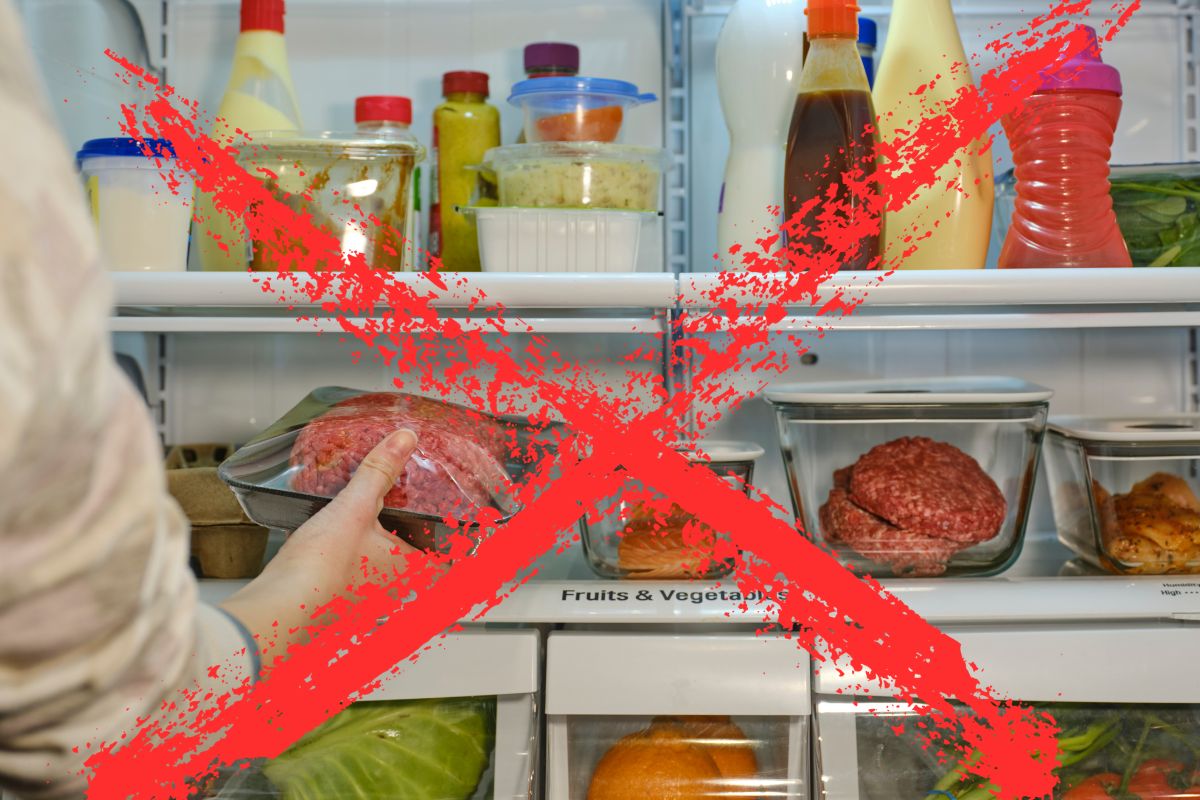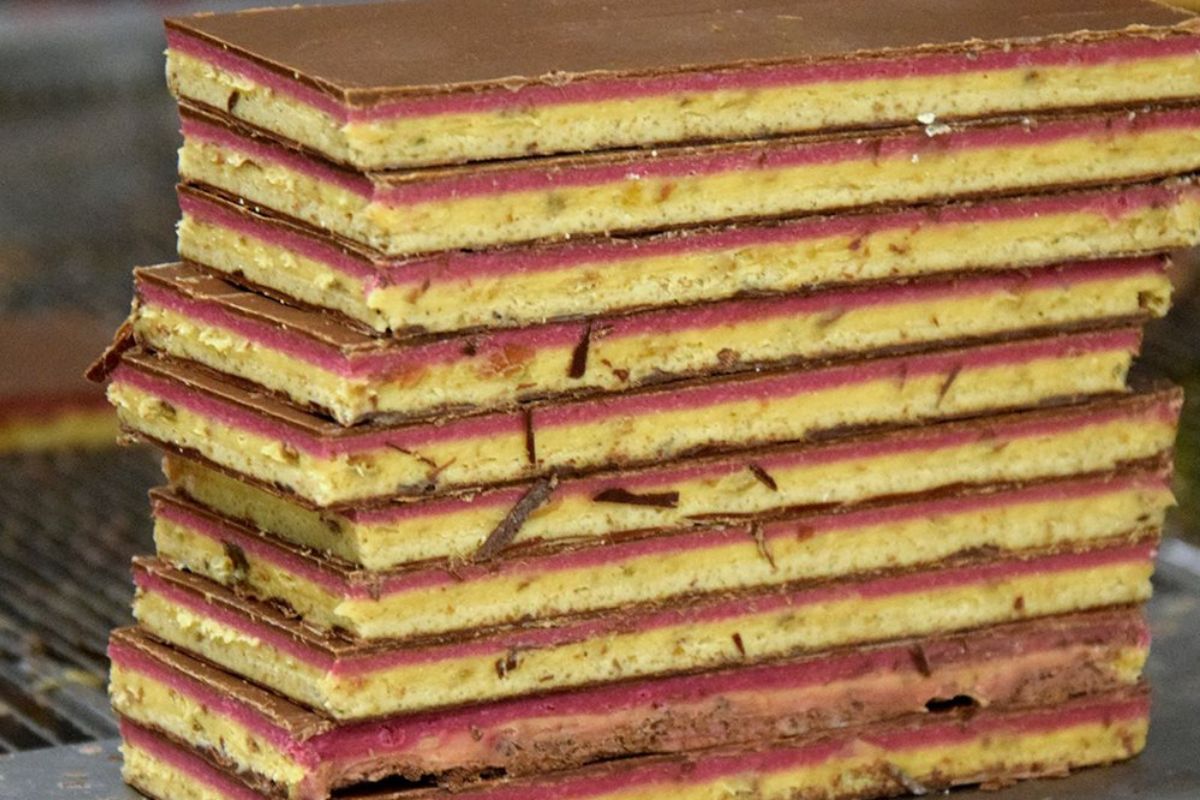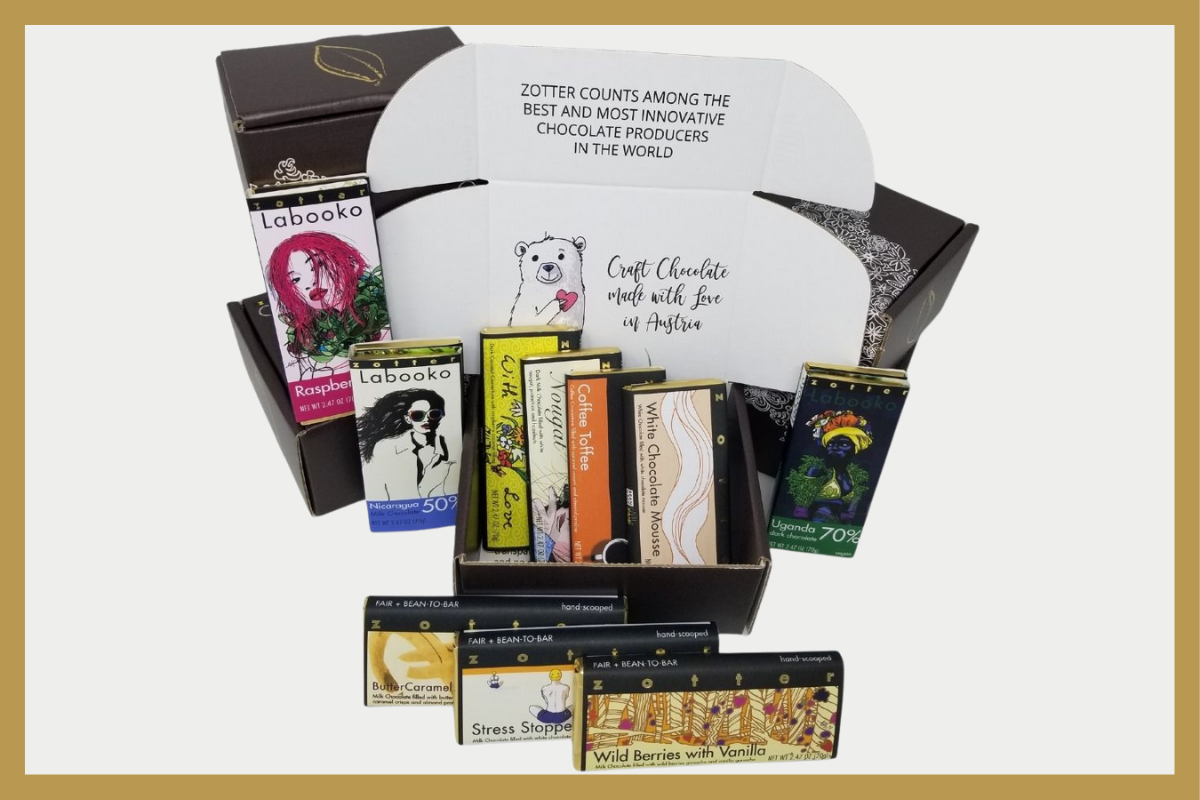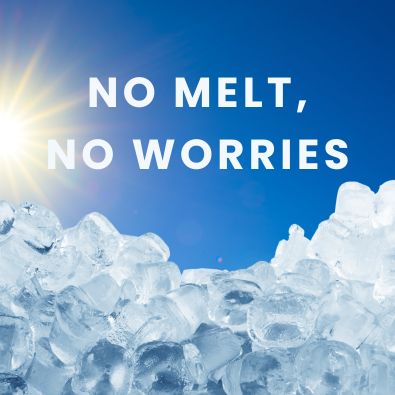Chocolate is a beloved treat enjoyed by many worldwide, but improper storage can impact its flavor and texture. Knowing how to store chocolate effectively can help preserve its freshness and ensure you can savor its delicious taste for longer. In this section, we will explore different methods for storing chocolate optimally.
Key Takeaways
- Check the best before date
- Avoid storing chocolate in the refrigerator
- Keep chocolate well-wrapped
- Protect chocolate from humidity, heat, and direct sunlight
- Store different types of chocolate accordingly
Checking the Best Before Date
Do you ever wonder if the chocolate you purchased is still fresh? Checking the best-before date is an essential step to ensure your chocolate is fresh and of the highest quality. Most chocolate packaging has a best-before-date label. It doesn’t necessarily mean that the chocolate is going bad right afterward, but indicates that it’s at its best quality until then. Usually, it’s still safe to enjoy chocolate after the best-before date, especially if it’s plain dark chocolate. Other types, like filled chocolate, high milk content, fruit, or nuts, can deteriorate in flavor and taste after they have reached the best-before date. A taste test of a tiny bit should give you an indicator if it’s still enjoyable or not.
Chocolate beyond its best before date can have a stale taste or a bloomy appearance. Therefore, it’s always wise to purchase chocolate with ample time for consumption before the date expires.
To make the most out of your chocolate, check the best-before date and consume it within the given period. This way, you’ll enjoy the full flavor, texture, and quality of your chocolate.
Skip the Refrigerator
Many people think that putting chocolate in the refrigerator will keep it fresh for longer, but in reality, this is not the best method. Fluctuating temperatures and humidity can cause condensation, leading to a loss of flavor and texture. It’s best to store chocolate in a cool, dry place between 60°F and 70°F (15°C and 21°C).

Keeping Your Chocolate Well Wrapped
Proper wrapping or storing chocolate in an airtight container is crucial to maintaining its freshness. Exposure to air can cause it to become stale and lose its flavor over time.
Use foil, plastic wrap, or wax paper to wrap each chocolate piece individually to prevent them from sticking together. If you are storing multiple pieces, place them in a sealable storage bag or container.
Avoid using plastic bags because they can trap moisture, which can affect the texture and taste of the chocolate. Instead, opt for airtight containers made of glass or metal. Make sure to label the container with the chocolate’s best-before date so that you can use or discard it accordingly.
By following these simple steps, you can extend the life of your chocolate, savoring it for days to come.
Enjoying Pure Chocolate Beyond the Best Before Date
Do you find yourself throwing out expired food often? While it’s essential to keep an eye on the best-before date, it’s worth noting that pure chocolate can still be enjoyed way past that date.
The best-before date on chocolate is an indicator of its quality and freshness. However, unlike other perishable foods, pure chocolate doesn’t spoil as quickly. Properly stored chocolate can maintain its taste and texture for an extended period.
So, why can pure chocolate be enjoyed beyond the best-before date? The answer lies in its ingredients. Chocolate is comprised of cocoa solids, cocoa butter, and sugar, all of which have a long shelf life. As long as it has been stored correctly, pure chocolate doesn’t usually spoil. Instead, it may lose some of its flavor and texture over time.
When stored correctly, pure chocolate typically lasts 12 to 18 months beyond the best-before date. But how can you ensure your chocolate stays fresh for that long? Pay attention to its storage conditions. Keep it in a cool, dry place, away from humidity, heat, light, and strong odors. And be sure to wrap it or store it in an airtight container to prevent air exposure.
In summary, if stored correctly, pure chocolate can still be enjoyed beyond its best-before date. So, don’t be so quick to throw out that dark chocolate bar you’ve been hoarding. Savor it and enjoy it beyond the best before date.
No Worries About Chocolate Bloom
Have you ever noticed white streaks or spots on the surface of your chocolate? This is known as chocolate bloom, and while it may not be visually appealing, there’s no need to worry. Chocolate bloom is safe to consume and does not affect taste.
Chocolate bloom is caused by temperature changes or exposure to moisture, which causes the sugar or fat in the chocolate to rise to the surface. There are two types of chocolate bloom: fat bloom and sugar bloom.
Fat bloom occurs when the chocolate has been stored at high temperatures or is exposed to extreme temperature fluctuations. Sugar bloom, on the other hand, occurs when moisture comes into contact with the chocolate surface, dissolving the sugar and crystallizing it as it dries.
While chocolate bloom may not look appealing, it is still perfectly safe to eat. The best way to prevent it from happening is to store your chocolate properly in a cool, dry place, away from moisture and high temperatures.
Understanding the Impact of Humidity
Humidity can have a significant impact on the quality of chocolate. When exposed to humidity, chocolate can absorb moisture and become sticky or grainy in texture, which affects its taste and appearance. As a result, it’s best to avoid storing chocolate in places with high humidity, such as the refrigerator.
The moisture in the refrigerator can cause chocolate to condense on the surface, creating unappetizing white streaks or spots called “chocolate bloom.” Although chocolate bloom is generally safe to eat, it can change the texture and taste of the chocolate, which can be disappointing.
To maintain the freshness and quality of your chocolate, store it in a cool, dry place with low humidity levels, away from direct sunlight, strong odors, or heat sources. By keeping humidity in mind, you can ensure your chocolate stays in excellent condition and retains its flavor for longer periods.
Choosing the Right Storage Temperature
When it comes to storing chocolate, temperature plays a crucial role in maintaining its freshness and flavor. Ideally, it should be stored in a cool and dry place between 60°F and 70°F (15°C and 21°C). This temperature range ensures that the chocolate remains stable and does not melt or lose its shape.
It’s best to avoid exposing chocolate to direct sunlight or heat sources, as they can cause the chocolate to deteriorate quickly and develop a chalky texture. Also, it’s not recommended to store chocolate in the refrigerator, as the humidity and fluctuating temperatures can lead to condensation, altering the chocolate’s flavor and texture.
To summarize, keep your chocolate in a cool, dry place away from sunlight and heat sources. Following these storage guidelines will help to preserve the freshness and taste of your favorite chocolates.
Avoiding Strong Odors
When it comes to storing chocolate, one factor many people overlook is the impact of surrounding smells. Chocolate can easily absorb odors from other strongly scented substances, such as spices or cleaning products, which can greatly compromise its quality and flavor. To avoid this, be sure to store your chocolate away from these strong-smelling items.
Keeping your chocolate in an airtight container can help prevent odors from permeating the packaging. You can also store it in a separate area from other foods, like in a pantry or cupboard. By taking these simple steps, you can ensure that your chocolate maintains its rich, luxurious flavor!
Protecting Chocolate from Light
Dark, milk and white chocolate are all vulnerable to ultraviolet (UV) light exposure. Exposure to UV light can cause chocolate to discolor and affect its flavor. Protect your chocolate from light damage by storing it in opaque containers, away from light sources. Alternatively, you can wrap your chocolate in foil to shield it from light exposure. Not only will this help maintain its rich flavor and texture, but it will also keep it looking fresh and appetizing.
Properly Storing Different Chocolate Types
When it comes to storing chocolate, it’s important to remember that different types of chocolate have varying needs. Here are some guidelines to help you properly store milk chocolate, dark chocolate, and white chocolate.
Storing Milk Chocolate
Milk chocolate is more delicate than dark chocolate and can quickly become soft and sticky if not stored correctly. To keep milk chocolate fresh, store it in a cool place, away from direct sunlight and heat sources. Wrap it tightly to prevent exposure to air, which can cause it to go stale. Avoid storing milk chocolate in the refrigerator or freezer, as this can cause moisture to accumulate, and the chocolate can develop a white film.
Storing Dark Chocolate
Dark chocolate can tolerate more variation in temperature than milk chocolate, but it still needs proper storage. Store dark chocolate in a cool and dry place, similar to milk chocolate. Dark chocolate should be stored away from strong odors, so it doesn’t absorb any unpleasant scents. Dark chocolate can also be stored in the refrigerator in a sealed container, but it’s essential to bring the chocolate to room temperature before consuming it to prevent blooming.
Storing White Chocolate
White chocolate is the most delicate of all chocolate types. Its high cocoa butter content makes it susceptible to melting at room temperature. It is best to store white chocolate in the refrigerator in an airtight container to keep it fresh. White chocolate can absorb odors, so be mindful of where you store it. Like milk chocolate, white chocolate should be taken out of the refrigerator and left at room temperature for a few minutes before consuming it.
By following the specific guidelines for each chocolate type, you can ensure that your chocolate stays fresh and delicious for longer. Take care in wrapping and storing your chocolate to maintain its taste and texture.

Conclusion
In conclusion, proper chocolate storage is essential to maintain its flavor and texture. By checking the best before date, avoiding the refrigerator, wrapping chocolate well, and choosing the right storage temperature, you can keep your chocolate fresh and delicious for longer. Remember to protect chocolate from light, humidity, and strong odors, and understand the specific storage guidelines for milk, dark, and white chocolate.
Don’t let chocolate bloom or discoloration deter you from enjoying it beyond its best-before date. Pure chocolate can be enjoyed for a while if stored properly. If you’re a true chocolate lover, investing in a high-quality, airtight container is a wise decision.
By following these easy guidelines, you can be confident that your chocolate will always be ready to indulge in and impress your friends and family. Happy chocolate storing!
FAQ
How important is it to check the best-before date on chocolate?
It is essential to check the best-before date on the chocolate packaging before purchasing or consuming it. This will help you determine its freshness and quality.
Should I store chocolate in the refrigerator?
Contrary to popular belief, storing chocolate in the refrigerator is not ideal. The fluctuating temperatures and humidity can cause condensation, leading to a loss of flavor and texture.
How should I keep my chocolate well-wrapped?
To maintain freshness, ensure your chocolate is properly wrapped or stored in an airtight container. This prevents exposure to air, which can cause it to become stale.
Can pure chocolate be enjoyed beyond the best-before date?
Unlike other perishable foods, pure chocolate can still be enjoyed beyond its best-before date. As long as it has been stored properly, taste and quality are not compromised.
What is chocolate bloom, and is it safe to consume?
Chocolate bloom refers to the appearance of white streaks or spots on the surface. While it may not be visually appealing, the chocolate bloom is still safe to consume and does not affect the taste.
How does humidity affect chocolate, especially when stored in the refrigerator?
Humidity can be detrimental to chocolate, causing it to absorb moisture and change in texture. This is why refrigerators are not suitable for storing chocolate.
What is the right storage temperature for chocolate?
Ideally, chocolate should be stored in a cool and dry place between 60°F and 70°F (15°C and 21°C). Avoid exposure to direct sunlight or heat sources.
Why should I avoid storing chocolate near strong odors?
Chocolate can absorb odors from its surroundings, compromising its flavor. Store it away from strong-smelling substances like spices, cleaning products, or other strongly scented foods.
How can I protect chocolate from light?
Ultraviolet (UV) light can cause chocolate to discolor and affect its flavor. Keep chocolate stored in opaque containers or wrapped in foil to shield it from light exposure.
Are there different storage guidelines for different types of chocolate?
Yes, there are variations in how different types of chocolate should be stored. Learn the specific guidelines for storing milk chocolate, dark chocolate, and white chocolate.
Keep Your Chocolate Well Wrapped
When chocolate is in its original packaging, it does not need any additional wrapping to be stored. However, once you open a bar, place the remnants in an airtight container or bag to keep the flavors pure and potent.
When you place an order with Zotter Chocolate, you can select shipping with our no-melt guarantee, which ensures that every bar will be delivered to your door in peak condition. Shop for your favorite chocolates or find some new favorites to enjoy in our online store.


